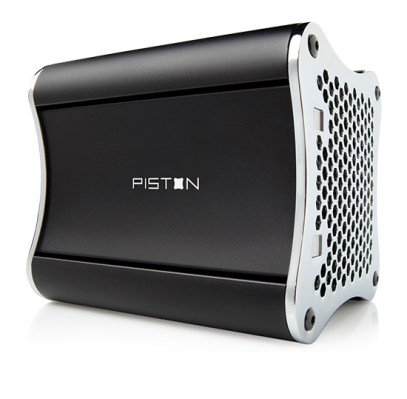Valve’s Steam Box initiative will probably not end up being a single device, but a platform approach which includes a variety of hardware from different OEMs. The first such device is available now for pre-order from Xi3, for the hefty price of $999.99 (or $899.99 right now with a $100 pre-order discount). At that price, it’s not likely to sway anyone considering an Xbox, but it shows that Valve and its partners might be pulling a Google by showing the world the top end of the market before they launch more practically priced gadgets.
The Xi3 Piston is a gaming-optimized personal computer, with a small, portable enclosure that contains a 128GB SSD and 8GB of RAM within, with upgrade options to either 256 or 512GB of flash storage (for a price). The Piston is set for a late 2013 delivery date, and boasts a 3.2GHz quad core processor. Little else is know about the gadget, but it will be designed specifically to play nice with Steam and that software’s Big Picture mode, thanks in part to an investment from Newell’s company. Other details of what’s inside the hand-holdable case (and how exactly it’ll integrate Steam) will come as the official launch date nears, so this isn’t only a pre-order for big spenders, but for gamblers, too.
The Piston will most likely be among the top-tier of upcoming devices that can wear the “Steam Box” moniker according to the Verge, so don’t get too freaked out if you don’t have $1,000 to spend on a gaming rig. Newell’s approach to the Steam Box seems to involve creating a platform that’s all about extending the reach of Steam to as many as possible, not shutting it down behind a high cost of entry. It’s also worth noting that despite the Piston’s small size, it’s also going to be upgradeable, which is a big selling point when you’re talking about a home console, which often has a shelf life of 10 years or more.
Just last week, Newell told the BBC that Valve is currently working on Steam Box prototypes to release to testers in the next three or four months, and this could be part of that project, though it’s also possible that Steam will contribute own-branded hardware to the ecosystem as well.
